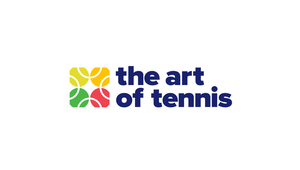The Art of Being Present on the Tennis Court

We live our lives far too often stuck in our own thoughts, overthinking possibilities, probabilities and negativities.
On the tennis court, this can be extremely damaging. It can trap players in an endless loop of replaying the past or fearing the future. As players, we’ve all been there. Something goes wrong, you just miss that winner or mishit that serve, and it poisons the next few points as you wrestle with disappointment and missed opportunity. You start asking yourself those unhelpful philosophical questions: How did this happen? and Why did this happen to me?
Some players manage to lose the game, regroup, and bring themselves back to the task at hand. For others, it spirals into anger, sadness, shame, or frustration — emotions that can become the thorn in your side for not just that match, but future matches too.
The problem, of course, is that while you’re stuck in your own thoughts and emotions, you’re not actually present. You’re not ready to respond to that wide ball, to make that snap decision to lob instead of pass, to feel the fine touch needed for a drop shot, or to react like a prize fighter to a powerful first serve.
How to Return to the Present
As a player, you can only control what you can control. Sometimes your opponent will have more skill, more luck, or simply a better day. But you can always control how hard you run for the ball, what shot you choose, and how you prepare your mind to be in a state of heightened awareness.
Heightened awareness means being more fully conscious of what’s happening right now, when your senses, body and mind are all tuned in together.
Coming to Your Senses
Metaphorically and literally, this is exactly what you need to do.
Even though it might feel like your opponent has a sixth sense sometimes, we’ll focus on the main five.
Less Relevant (but still useful)
Smell – Not so relevant for tennis, but I encourage players to breathe deeply through their noses at the end of every point and at each change of ends.
Taste – Even less relevant, but use your water or snack breaks to actually notice the taste. It’s a simple way to pause and pull yourself away from your “monkey mind.”
Highly Relevant
Feel – Every movement, every backswing, every shot contact and follow-through is about feeling. Focusing on the feeling of the shot, the movement, or even the texture of the ball as you bounce it before a serve helps bring you back toward presence.
Sight – We track the ball left to right, up and down, from rainbow shapes to laser beams, from topspin to backspin. We track our opponent all over the court as we navigate shot selection. Paying closer attention to the shape, spin and speed of the ball helps you get out of your head and into the moment where performance happens.
Sound – The rhythm of tennis is dictated by sound. The bounce-hit pattern, the high-pitched whip of topspin, the duller thud of a flat shot. By listening carefully, you can pick up clues about where the ball is going, how fast and how much spin it carries. Between points, I encourage players to also notice the sounds around them — birds, cars, people talking. It doesn’t matter what you hear, it matters that you’re present enough to notice it.
The Power of Breath
Weaving all of this heightened awareness together is your breath.
Between points, players should consciously slow their breathing to reset both body and mind.
Two simple techniques:
- Triangle Method: Inhale through the nose, hold, then exhale through the mouth.
- Box Method: Inhale through the nose, hold, exhale through the mouth, then hold again after the exhale.
Start with about three seconds per phase and increase as you build comfort and control.
Bringing It All Together
By combining breathwork with sensory awareness, players can become more focused, more resilient, and ultimately, their best selves on the court.

Cheers,
Rick Willsmore
Scarborough Tennis Academy
www.scarboroughtennis.com.au
















